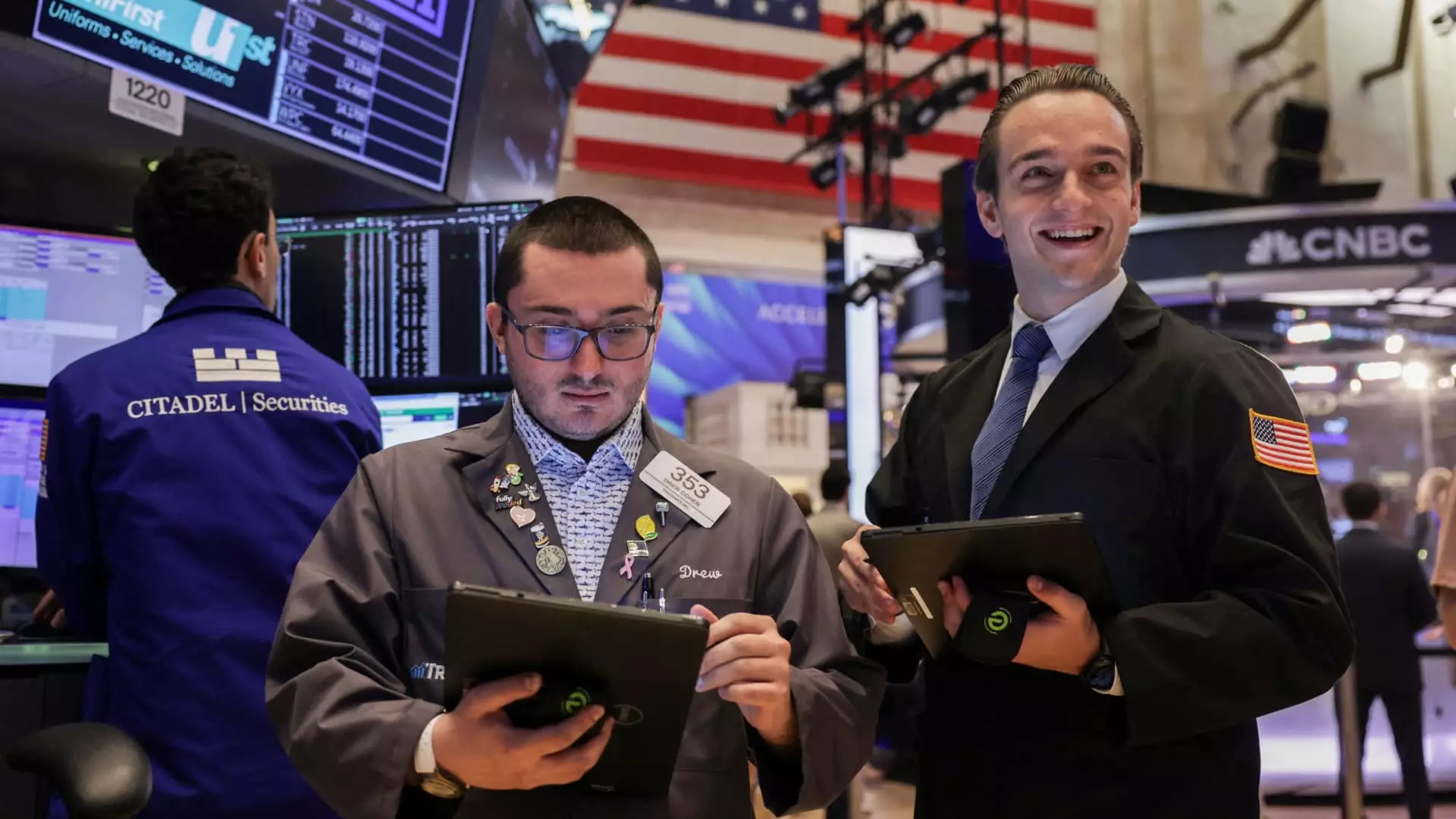In recent weeks, the stock market has exhibited a seemingly unstoppable ascent, fueled by a wave of optimistic quantitative reports and geopolitical assurances. The S&P 500’s flirtation with record highs and the Nasdaq’s crossing of the 21,000 mark appear to paint a picture of unwavering growth. But beneath this veneer lies a troubling paradox: the apparent robustness may be masking deeper vulnerabilities. While headline figures shout victory, a more critical gaze reveals that this prosperity largely rests on a shaky foundation of superficial fundamentals and opportunistic optimism rather than genuine economic strength.
A key question lingers: how sustainable are these gains when so much of the narrative is shaped by a few stellar earnings reports? Alphabet and Verizon, two giants in their spheres, have boosted investor confidence with better-than-expected results. Yet, these successes, rather than signaling a rebirth of resilient economic activity, should be viewed through a cautious lens. Superficial earnings beats often overshadow underlying issues like labor market stagnation, rising debt levels, and sluggish productivity. The market’s euphoric push toward new highs may be more a reflection of investor complacency and algorithm-driven momentum than of real economic expansion.
The Problem with Overconfidence in “Solid Fundamentals”
The narrative supporting the rally hinges on the belief that inflation remains under control, interest rates are stable, and corporate earnings are trending higher. But this optimism is critically selective. Yes, some companies are beating expectations, but a broader analysis reveals that many sectors remain vulnerable to slowing growth, supply chain disruptions, and geopolitical tensions. The narrative of a “bull market supported by favorable fundamentals” often ignores the warning signs that shouldn’t be dismissed: rising corporate leverage, widening income inequality, and the risk of inflationary pressures reemerging in a surprise manner.
The recent trade deals, including the purported “massive” agreement with Japan and discussions with the EU, also serve as political theatrics rather than concrete economic shifts. Tariffs and trade restrictions have historically been double-edged swords—initially boosting short-term sentiment but ultimately threatening long-term global supply chains. The superficiality of current enthusiasm ignores that these agreements are preliminary and susceptible to renegotiation amid changing political climates. Investors who cling to the narrative that trade tensions are easing may be setting themselves up for disappointment.
The Risks That Are Being Overlooked
While market pundits trumpet the strength of the current rally, they tend to downplay or dismiss the mounting risks. Geopolitical conflicts, such as tensions with Russia-Ukraine and the Middle East, cast long shadows over global stability. The market’s resilience under these conditions arguably reflects a dangerous complacency—a belief that central banks and policymakers can always shield the economy from shocks when history suggests otherwise.
Moreover, the upcoming Federal Reserve meeting, expected to keep rates steady, might temporarily soothe nerves. Yet, such decisions often cease to mask deeper issues—namely, that with interest rates so close to the zero lower bound, the room for maneuver is limited. If inflation were to unexpectedly flare up, the current “range-bound” rates could quickly turn restrictive, triggering sharp corrections.
Investors’ faith in earnings and geopolitics overlooks the intrinsic fragility of the current economic landscape. The rally, although seemingly driven by solid fundamentals, is more accurately described as a fragile veneer of confidence built on speculative optimism. Sustained growth would require a genuine reset—one aligned with real productivity gains and structural reforms—not just the fleeting glow of quarterly earnings reports and trade negotiations. Until then, the market’s buoyancy remains precarious, susceptible to an abrupt reality check that could wipe out recent gains in a heartbeat.


Leave a Reply